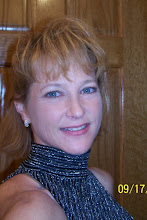 I love water lillys and drew out this design the other day while sitting in the doctor's waiting room. Now the question is: What will I do with it. It looked great the way it was, but who wants to look at just a pencil drawing? So, my choices were:
I love water lillys and drew out this design the other day while sitting in the doctor's waiting room. Now the question is: What will I do with it. It looked great the way it was, but who wants to look at just a pencil drawing? So, my choices were:
dye it using pysanky dyes
carve it in relief
paint it
bead it
scrimshaw
How about doing a series and do one egg in each choice?
It may take me a while to complete the series, so keep checking in for result. I was planning on submitting a "Mother's Day Egg" for a pysanky egg group, so I decided this would be the design to submit.
This is an ostrich egg. Normally, one would submerse the whole egg to complete the dying process when doing pysanky. I decided I wanted more control on shading, so I combined the painting and dying process into one.
To decide upon the colors that I wanted to use, I took a broken piece of ostrich shell and painted small swatches on it using colors that might make good combinations.Using Colorama dyes and soft grip brushes from PysankyUSA.com, I started painting the dye onto the Lilly. I used #10 Cotton Candy as my base color and outlined and shadowed with #29 Raspberry. It looks pretty flat - not dimensional, but it was time to put the flower side of it to bed and work on the leaves. Once done with the leaves, I can go back and highlight the flower.
Ok, there are two different types of leaves on this egg: the lilly pads and water reeds, so it is best to not use the same colors on them. Once again, I placed color swatches on scrap shell so I could find a color combination that I liked.
The lilly pad has a base color of #1 Shamrock and is shaded in #11 Dark Forest. I also used #11 Dark Forest to outline the leaves. The reeds need to be more subdued, so I chose #15 Granny Smith. I shadowed and outlined with my all time favorite Colorama green #4 Asparagas. I really liked the effect.
It's time to hightlight both the flowers and the leaves. One color looks great washed over all the base colors that I've chosen.....#40 Sun Yellow. If you look at Pink Water Lillys, you will notice that they do have yellow in them, so this seems to be a perfect match. I posted this picture in a larger format so you can see the yellow better as photos are never the same as how the eye sees it.
I then went back over the flower and darkened my shadows more.
The stamen is #40 Sun Yellow, with brush strokes of #33 Temple Orange.
You can see the completed work for the stamen in the larger photo.
The final colors are for the water. This was the hardest decision, as there are some many beautiful blues, aquas, and greens in the Colorama dyes.
I headed back to my scrap shell and painted out my color swatches and decided on #3 Aquamarine and #16 Ice Blue. I'm glad I have several different sizes of the soft grip brushes from PysankyUSA.com. I could opt to use regular paint brushes, but feel it is best to have a separate set of brushes designated only for pysanky dyes. These brushes are great to use!
I also used #38 Dolphin Grey to paint vein lines on the flower petals.
All in All - - I love the results. The pictures do not show the final varnished egg. I will post the final egg at the end of my series, with all the different lillys.
Please visit Jim's website for your pysanky, and Drop/Pull needs at
PysankyUSA.com
























